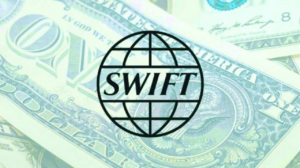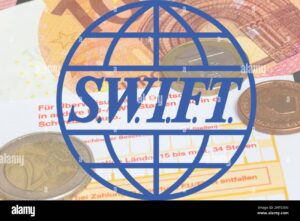Understanding SWIFT and Global Payment Methods: A Guide for Businesses
In an increasingly interconnected world, businesses are no longer confined by geographical boundaries. This globalization has made cross-border payments an essential part of daily operations for many companies. However, making payments across borders comes with its challenges, from varying fees to different processing times and regulations. One of the most widely used systems for international payments is SWIFT (Society for Worldwide Interbank Financial Telecommunication). In this article, we’ll delve into how SWIFT works, explore other global payment methods, and discuss the benefits and drawbacks of each.

1. What is SWIFT?
SWIFT, or the Society for Worldwide Interbank Financial Telecommunication, is a global messaging network that banks and financial institutions use to securely transmit information about financial transactions. Founded in 1973 and headquartered in Belgium, SWIFT has become the backbone of international banking, facilitating cross-border payments in over 200 countries.
Unlike other payment systems that move funds directly, SWIFT does not actually transfer money. Instead, it sends secure messages between banks to verify transaction details, allowing banks to communicate quickly and securely. This ensures that funds reach the correct account, while adhering to strict security protocols.

How SWIFT Works:
- Message Transmission: When a business or individual wants to send a payment to a foreign bank account, their bank sends a SWIFT message to the recipient’s bank. This message includes details like the amount, currency, and destination account.
- Verification and Processing: The recipient’s bank verifies the transaction information and processes it, deducting any applicable fees before crediting the funds to the destination account.
- Settlement: The actual transfer of funds is handled through a series of intermediary banks, as SWIFT messages instruct the banks on how to route the payment.
2. The Benefits of SWIFT
Using SWIFT for international transactions comes with several benefits:
- Global Reach: With over 11,000 institutions in more than 200 countries connected to SWIFT, businesses can transfer funds virtually anywhere in the world.
- Security: SWIFT is known for its high level of security, employing encryption and two-factor authentication for every transaction message.
- Transparency: Each transaction comes with unique tracking codes, allowing businesses to monitor payments in real-time and ensuring accountability at each stage.
3. Other Popular Global Payment Methods
While SWIFT is a dominant force in international payments, other methods are also popular, especially as technology evolves. Here’s a look at some alternative payment methods:
1. SEPA (Single Euro Payments Area)
SEPA is a payment integration initiative of the European Union, allowing businesses and individuals to make transfers across Europe as easily as they would domestically. SEPA payments are usually fast, secure, and inexpensive but are limited to EUR transactions within the EU and several non-EU countries.
2. CHIPS (Clearing House Interbank Payments System)
CHIPS is the U.S.-based equivalent of SWIFT for domestic transactions. While SWIFT is international, CHIPS specializes in high-value, real-time payments within the U.S. financial system. CHIPS offers efficient processing for large sums, primarily for corporate and institutional clients.
3. PayPal and Similar Online Payment Systems
Platforms like PayPal, TransferWise, and Revolut provide a convenient, fast, and often low-cost solution for smaller cross-border transactions. They offer user-friendly mobile apps and transparent pricing, making them suitable for freelancers, small businesses, and personal payments. However, these platforms may have limitations on transaction size and lack some of the security and tracking features of SWIFT.
4. RTGS (Real-Time Gross Settlement)
RTGS systems, available in many countries, enable the immediate transfer of large sums of money between banks in real-time. For example, TARGET2 is the RTGS system for Euro payments in Europe. These systems are typically used for high-value transactions where prompt settlement is necessary.
4. Choosing the Right Payment Method for Your Business
When it comes to international payments, choosing the right method depends on several factors, including the speed of the transaction, associated fees, and the countries involved. Here’s a breakdown of each payment method’s suitability based on these factors:
| Method | Best For | Speed | Cost | Coverage |
|---|
| SWIFT | Large, secure cross-border transactions | 1-5 business days | High (varies by bank) | Worldwide |
| SEPA | Eurozone payments | 1-2 business days | Low | EU and select non-EU |
| CHIPS | U.S. high-value domestic payments | Same-day | Moderate | U.S. |
| PayPal/Online | Small business and personal transactions | Instant to 1 day | Low to Moderate | Limited to online-friendly countries |
| RTGS | High-value, urgent domestic transactions | Real-time | High | Country-specific |
Businesses should assess their needs based on transaction value, timing requirements, and destination country when selecting the most suitable payment method.
5. How TimeFX and SWIFT Work Together to Serve Businesses
At TimeFX, we leverage the SWIFT network to enable secure, efficient, and reliable international payments for our clients. By integrating with SWIFT, we provide businesses of all sizes with the tools they need to handle cross-border transactions seamlessly.
With TimeFX, businesses can benefit from:
- Enhanced Security: SWIFT’s secure messaging combined with our robust security infrastructure.
- Global Reach: Access to a wide network of banks and financial institutions worldwide.
- Cost Savings: Reduced transaction fees and competitive currency exchange rates.
Additionally, TimeFX offers support for multi-currency accounts, allowing businesses to hold and convert funds in various currencies, making it easier to manage international transactions without needing multiple bank accounts.
6. The Future of International Payments
As the world moves toward digitalization, new technologies and payment solutions are emerging to challenge traditional systems like SWIFT. Innovations like real-time payment systems are changing how quickly and efficiently businesses can transfer funds across borders. While SWIFT remains a cornerstone for international finance, businesses should keep an eye on these emerging technologies to stay competitive.
In the coming years, payment providers may increasingly combine traditional systems with modern fintech solutions to deliver hybrid models, offering both the reliability of established networks like SWIFT and the agility of modern payment technologies.
Conclusion
Whether you’re a small business or a large corporation, understanding the different global payment methods available can be crucial for managing your finances effectively. While SWIFT remains a powerful tool for secure, large-scale international transactions, other options like SEPA, PayPal, and RTGS offer additional flexibility for different business needs. At TimeFX, we are committed to providing you with the best payment solutions, ensuring that your international transactions are secure, fast, and cost-effective.
By partnering with us, you’ll have access to a comprehensive suite of global payment options tailored to meet the evolving demands of today’s global economy.
